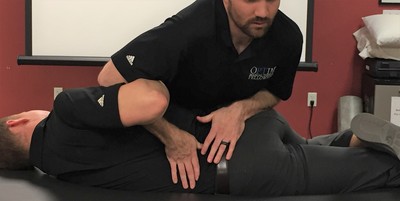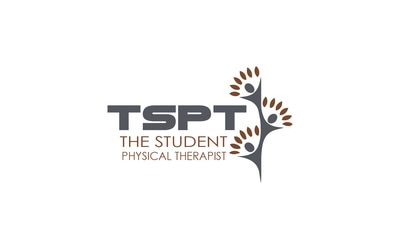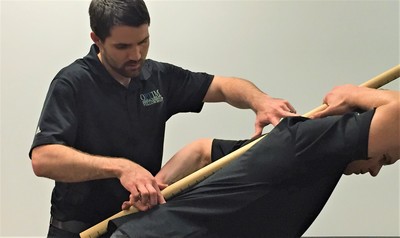- Home
- About Us
- TSPT Academy
- Online Courses
-
Resources
- Newsletter
- Business Minded Sports Physio Podcast
- Day in the Life of a Sports PT
- Residency Corner
-
Special Tests
>
-
Cervical Spine
>
- Alar Ligament Test
- Bakody's Sign
- Cervical Distraction Test
- Cervical Rotation Lateral Flexion Test
- Craniocervical Flexion Test (CCFT)
- Deep Neck Flexor Endurance Test
- Posterior-Anterior Segmental Mobility
- Segmental Mobility
- Sharp-Purser Test
- Spurling's Maneuver
- Transverse Ligament Test
- ULNT - Median
- ULNT - Radial
- ULNT - Ulnar
- Vertebral Artery Test
- Thoracic Spine >
-
Lumbar Spine/Sacroiliac Joint
>
- Active Sit-Up Test
- Alternate Gillet Test
- Crossed Straight Leg Raise Test
- Extensor Endurance Test
- FABER Test
- Fortin's Sign
- Gaenslen Test
- Gillet Test
- Gower's Sign
- Lumbar Quadrant Test
- POSH Test
- Posteroanterior Mobility
- Prone Knee Bend Test
- Prone Instability Test
- Resisted Abduction Test
- Sacral Clearing Test
- Seated Forward Flexion Test
- SIJ Compression/Distraction Test
- Slump Test
- Sphinx Test
- Spine Rotators & Multifidus Test
- Squish Test
- Standing Forward Flexion Test
- Straight Leg Raise Test
- Supine to Long Sit Test
-
Shoulder
>
- Active Compression Test
- Anterior Apprehension
- Biceps Load Test II
- Drop Arm Sign
- External Rotation Lag Sign
- Hawkins-Kennedy Impingement Sign
- Horizontal Adduction Test
- Internal Rotation Lag Sign
- Jobe Test
- Ludington's Test
- Neer Test
- Painful Arc Sign
- Pronated Load Test
- Resisted Supination External Rotation Test
- Speed's Test
- Posterior Apprehension
- Sulcus Sign
- Thoracic Outlet Tests >
- Yergason's Test
- Elbow >
- Wrist/Hand >
- Hip >
- Knee >
- Foot/Ankle >
-
Cervical Spine
>
- I want Financial Freedom
- I want Professional Growth
- I want Clinical Mastery
Lumbar Quadrant Test
Purpose: To determine if the lumbar spine is the source of the patient's symptoms.
Test Position: Sitting.
Performing the Test: The patient's arms are folded across his/her chest. The examiner places the lumbar spine in hyperextension (the examiner may choose to maintain the hyperextension by placing his/her knee against the lumbar spine), along with combined ipsilateral lateral flexion and rotation to end range. The examiner then applies an overpressure through the shoulders. A positive test is a reproduction of the patient's pain that brought him/her in to seek treatment.
Diagnostic Accuracy: Unknown.
Importance of Test: As this is the lumbar clearing test, it is an extremely useful test to ascertain the source of the patient's symptoms. The combined motion of extension and ipsilateral lateral flexion and rotation decreases the intervertebral foramen to its smallest size. With overpressure, this test can detect wither decreased space for the nerve roots or other innervated structures is the cause of the patient's pain, along with other pathologies, such as fractures.
Note: tests should only be performed by a properly trained health care practitioner.
Test Position: Sitting.
Performing the Test: The patient's arms are folded across his/her chest. The examiner places the lumbar spine in hyperextension (the examiner may choose to maintain the hyperextension by placing his/her knee against the lumbar spine), along with combined ipsilateral lateral flexion and rotation to end range. The examiner then applies an overpressure through the shoulders. A positive test is a reproduction of the patient's pain that brought him/her in to seek treatment.
Diagnostic Accuracy: Unknown.
Importance of Test: As this is the lumbar clearing test, it is an extremely useful test to ascertain the source of the patient's symptoms. The combined motion of extension and ipsilateral lateral flexion and rotation decreases the intervertebral foramen to its smallest size. With overpressure, this test can detect wither decreased space for the nerve roots or other innervated structures is the cause of the patient's pain, along with other pathologies, such as fractures.
Note: tests should only be performed by a properly trained health care practitioner.
Copyright © The Student Physical Therapist LLC 2023




